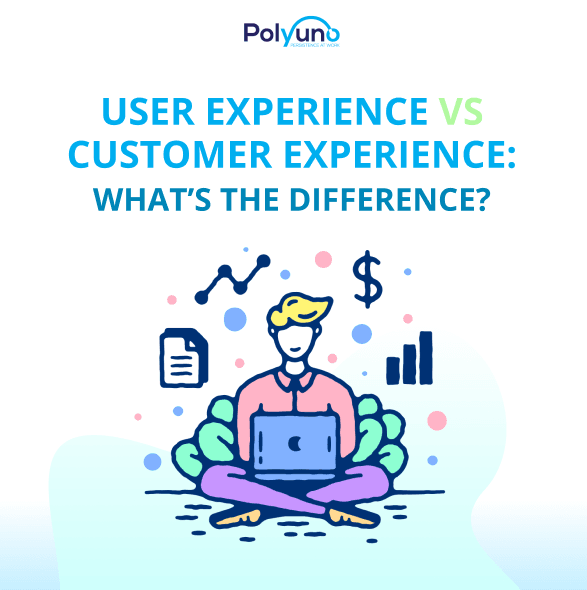
User Experience vs Customer Experience - are these terms two sides of the same coin, or just a couple of unrelated words mistakenly lumped in together?
Well, the answer may be a little of both. Yes and no!
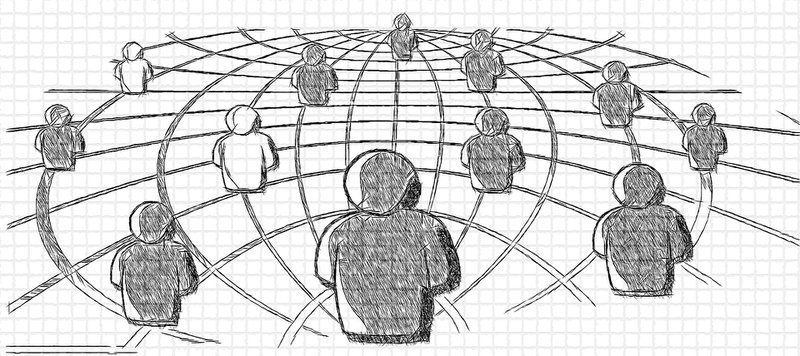
Usability experts Nielson Norman Group pinpointed that the original sense of UX was equivalent to what is currently known as CX. They also claimed that the term UX has evolved to describe a more specific and functional kind of interaction.
If you own a business or if you are simply a business enthusiast, you’ve probably heard about both these terms and how important they are for the success of your company.
However, it is still very natural being at sea and not being able to determine what is the difference between one another.
How do they complement each other? Which one is more important? How do they fit together to create successful outcomes? Do you need to put more effort into UX or CX?
Without further delay, let’s clear these things up.
UX is a concept developed in the computer era to describe the experience people have while interacting with your product, service, app, or website.
The first pillar of a good user experience is to meet the exact needs of the customers. And the second one is to fulfill those needs, elegantly and without a fuss.
A good digital UX gives a user the ability to:
The four main elements of UX are:
CX casts a much wider net and encompasses all of the interactions the customer has with all aspects of your company including a specific product within your brand or a specific service your brand provides.
In essence, UX is part of a broader CX, but CX contains some aspects outside of a product that UX does not. According to Forrester, customers are willing to pay 4.5 times more if the customer experience is good.
A good CX gives a customer the ability to:
Typically, Customer Experience refers to how users or customers perceive:
As you have no doubt determined by this point, UX is a subset of CX.
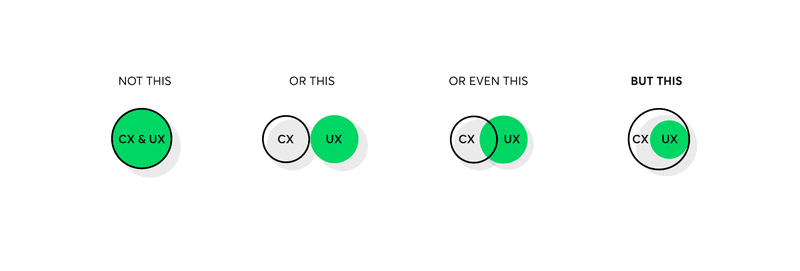
To put it simply, user experience is the experience your customers have with your product, whereas customer experience is the experience those users have with your brand as a whole.
Both are important to get right. For today, while CX is the top brand differentiator, UX— whether good or bad — is an extremely influential element of the overall CX.
According to PricewaterhouseCooper’s 2018 "Future of Customer Experience" study, nearly one-third (32%) of consumers said they would walk away from a brand they love after one single bad experience and 59% after several bad experiences. In addition, the study also found that customers are willing to pay as much as 16% more for a better experience.
As mentioned earlier, UX designers focus mainly on a user’s interaction with a single product, while CX designers focus on the consumer’s experience with the organization.
A CX designer’s primary aim is to improve overall brand perception and enhance customer loyalty. They are often coming up with better methods to market, better ways to connect with consumers, and better ways to develop overall enjoyable customer experiences.
UX designers, on the contrary, spend the majority of their time developing digital or non-digital products, monitoring customers as they engage with those products, and designing ways to improve those products based on user feedback.
CX is measured with metrics that are concerned with the “big picture”.
If you can’t measure it, you can’t improve it. Right? The role of these metrics is to measure, compare, and track the user experience of an app or a website over time.
Your metrics should be closely related to your objectives and overall business KPIs. Some of the most frequent UX metrics are:
Because the term “customer experience design” is relatively new and more well-known in service-related industries, CX designers are often working for retail companies and hospitality organizations.
On the other hand, UXers tend to work for clients that need a digital product, like a website or app, created or redesigned.
A CXer’s target audience is often the people with purchasing power whereas UX designers pay the most attention to whoever will be using the service or product.
When the chips are down, both disciplines put people and research at the center of what they do to provide better experiences and value while ultimately boosting profits.
Furthermore, we are entering an omnichannel era in which customers demand a seamless experience across a brand's websites, applications, and physical stores. With the Internet Of Things becoming more prevalent in everyday life, the two disciplines are becoming increasingly intertwined and should not be seen in isolation.
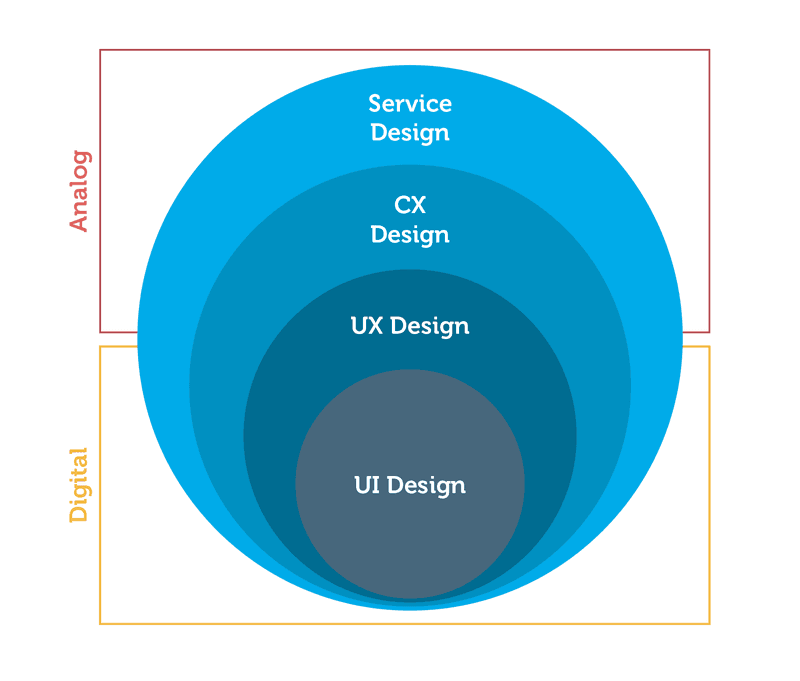
What is more, there is a tendency for companies to hire employees that are t-shaped and have a diverse set of talents. This means that UXers who can think about the broader picture are more likely to succeed than those who cannot.
The distinction between UX and CX is crucial because it allows you to precisely identify and respond to problems affecting your brand.
However, as previously mentioned, these two disciplines should not be considered in isolation. With the Internet of Things, they have become a part of everyday life. Therefore, just like branding, UX does not start or end only with your website.
Entering the world of omnichannel means interacting with your customers wherever they are. People expect an impeccable experience. Offering them omnichannel support across all your channels means interacting with them at any time.
Each interaction affects the customer’s probability of visiting a platform on different devices and making a purchase. By focusing on the omnichannel approach, you essentially combine your customers' buying experience across different channels.
However, to improve your overall Brand Experience (BX), focusing on both CX and UX equally is mandatory. Brand experience is how the user feels when engaging or interacting with a brand.
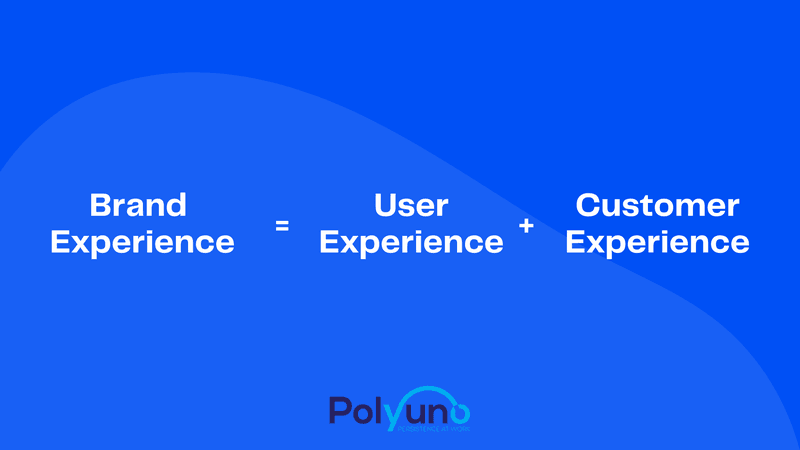
Hence, both these terms are equally significant for a better brand experience.
UX is a smaller part of CX, but this doesn’t mean we should neglect optimizing it. In fact, great UX is one of the most important ingredients of a solid CX strategy.
You may have amazing branding, a powerful presence, and high-quality services, but if a visitor can't find their way through your website, chances are they'll head over to your rivals.
Keep in mind that you should optimize your website or app with the users in mind. Focusing only on UX is insufficient if you want to create a bulletproof CX strategy. Even if a website or app is extremely user-friendly, fast, and intuitive, if you don’t have other CX components in place, you will lose customers.
If and only if both UX and CX are working toward the same goal, you will have satisfied customers.
Both UX and CX share the goal of improving experiences, whether by improving strategy, changing culture, or adopting user-focused design methods.
However, UX and CX focus on different sets of goals.
If you consider the relationship between a person and a company across that person’s lifetime, you can define that user’s experience at three different levels:
What it takes to deliver a good user experience at each level can be quite different.
The focus of UX is usually thought to be the interaction-level experience. It is concerned with developing the experience of a single interaction that a user has with a company to complete a task.
The majority of UX designers work at the interaction level. They design the interface for a website or an app. However, interaction-level experience applies not only to digital channels but also to other physical channels.
The journey level is the next level of experience. A customer journey is a step-by-step process that a customer goes through to reach a goal over time.
This procedure may involve a variety of devices and interaction channels, including web, desktop, or mobile apps, email, online chat, and phone.
Customer journeys can technically consist of one interaction if a user goal is completed as a single task and no other related interactions take place. However, most journeys consist of a series of related interactions aiming to complete a single goal.
The relationship level, often known as the customer experience, has the broadest scope of user experience.
At the relationship level, we focus on a person's lifetime experience with an organization and his cumulative perception as a patron of that organization. Rather than assessing the quality of one interaction or one journey, the holistic level is concerned with all interactions and journeys between that person and the company.
User Experience is the foundation of a good customer experience. These fields are very much intertwined and one isn’t necessarily more important than the other. UX and CX professionals have complementary skills, but currently are not working as closely together as they should be.
You can see how each plays an important role in the overall success of a program, the reputation of your brand, and customers’ loyalty to your brand. Failures in either area lead to a bad brand experience overall.
However, if you’re looking for a company to help you build a scalable and adaptable software solution that puts customer experience at the center of its focus, PolyUno has got you covered.
It has served more than 450 satisfied clients and completed more than 1400 projects. Request a quote now!